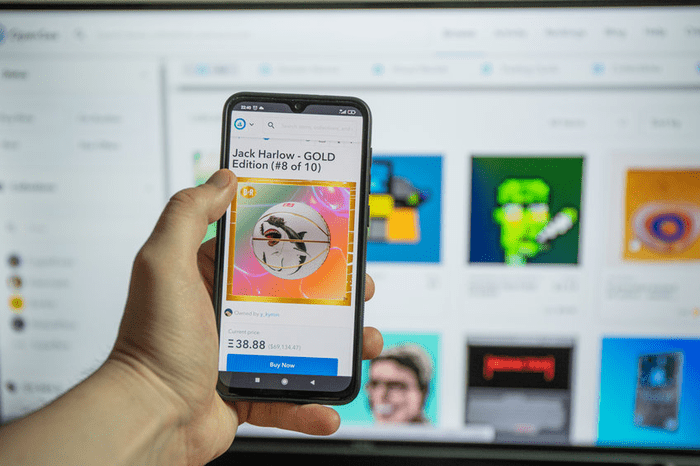NFTs are revolutionary digital assets that have changed many industries around the world. It uses blockchain technology to convert physical assets to tokens, decentralize them, and add encrypted security measures to make them accessible to their owners using unique IDs.
These identifiers are what we define as non-fungible tokens. NFTs can represent physical assets available for purchase, such as land, pictures, sculptures, and most tangible, sellable objects, which are unique to their owners and can’t be duplicated or divided.
As unique ownership identifiers, they have a single purpose: to show that someone owns an asset that can only be transferred by them. This article teaches you the fundamentals of NFTs and how they can be used to handle important transactions.
Understanding The Difference Between Fungibility and Non-Fungibility
Fungible tokens are different from NFTs because of certain key features. For starters, they aren’t unique. Every fungible token has the same value when being exchanged, and multiple people own the same token on a blockchain.
An example is Bitcoin. It is a fungible token with millions of owners and thousands of people invested in it. However, NFTs aren’t like this. They are unique, and their value is dependent on their owners.
Why are NFTs Important?
When the NFT market began, tokens were sold for as little as $0.2. However, the current market for NFTs is over $9 billion because it has been driven up by demand for valuable assets. Artists, industry gurus, and many other key figures have tokenized valuable information and traded it within the crypto market to drive value.
How NFT Blockchains Work
NFTs can be both physical and digital assets. That’s why you must mint them to host them on a blockchain. Minting ensures an NFT has valid information before providing its unique ID to the owner.
An entirely new blockchain is created for the NFT for really complex situations. Subsequently, they are sold on the marketplaces of the blockchain they are hosted on.
Before going further, smart contracts are another critical aspect of NFTs that needs to be considered.
What are Smart Contracts?
A smart contract is a line of executable code that contains specific conditions. The code within this contract will be carried out if and only if these conditions are met. Smart contracts don’t contain legal words or information pertaining to a lawyer or court. They are pretty much just complicated code.
To adequately use them, Smart contracts are stored on blockchains. They are completely secure so bad actors can’t interrupt your transactions except there is human error.
How NFTs Became Popular
Before NFTs began to impact significantly, certain conditions needed to be met. First, notable cryptocurrency projects were launched, and then information about NFTs began to be spread on various social media channels.
Though this was great, it didn’t come without its disadvantages, as lots of people got involved with failed projects.
However, once NFTs became popular enough, different items, from albums to deeds of land, started to be tokenized to increase their value. Football clubs even joined the fun and created Fan Tokens that rise in value during the season. Popular ones include PSG.
A major disadvantage of NFTs is that over 90% of the NFTs created at the time they began to trend are now redundant. However, the 5 -10% remaining are driving a billion-dollar market that still has room to grow.
The Secret Art of Using NFTs
NFTs are an interesting way to gain ownership of something unique. Buying a new NFT isn’t the same as owning a copyright or patent to an asset. A good example is purchasing a speed boat. You’ve bought the boat, but not the design schematics or rights to be the only one to own a speed boat (you are just the owner of this particular one).
If you’re interested in creating NFTs to use, you must first choose what digital method you’ll use to transmit the NFT. Once that’s settled you can select your blockchain (or create a new one), choose a suitable wallet, select a marketplace (e.g. Solana or Metamask), create your NFT, and then place it up for sale on the marketplace.
Conclusion
NFTs are wonderful assets that cover copyrights, economics, asset appreciation, and many more. This article has explored how to use NFTs and even the basics of smart contracts to help you understand them. NFTs have their benefits because of how they help individuals get a share of otherwise copyright-protected assets.
However, with the development of the NFT market, copyrights and patents might soon be sold in the marketplaces, too. However, that’s a story for another day.

